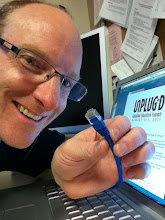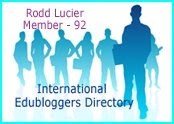Where Have Our Children Gone?
And now, in school districts across North America, adults are trying to get a grip on how to engage young people in helping themselves. The term 'mental health strategy' has become and education obsession as educators, parents and community members attempt to fix what's wrong with a generation that seems to be withdrawing from traditional society. Never before has a generation of learners cried out so loudly for help with their social and mental well being.
The Birth of a Secret Society
As I sat in a large group planning meeting last week, student success teams from our local high schools attempted to make practical sense of the guides and supports that were available to school communities. Action plans were drafted to be shared with our board level student success leaders, and a follow-up was promised.
While this work was underway, Jane McGonigal's book 'Reality is Broken' began rattling around in my brain. During my drive to/from school, I had recently finished reading the audio version of the book and I was inspired by the ways in which game mechanics were being leveraged to increase social engagement, to connect co-conspirators, and to solve problems. Long story short: before leaving the meeting, I had purchased a domain name, created new social media accounts, and had a draft in my mind for a new community-building game to be called 'Super Secret Society',
What type of missions are you talking about?
With a goal of creating a culture at our school that is based on friendliness and personal engagement, the missions that I'm collecting for broadcast can be characterized as fun (wear mis-matched socks); interactive (take time to notice the eye colour of your friends); challenging (stand up against an unnecessary use of vulgar or hateful language); generous (share something from your lunch with someone you've not shared with before); habit-forming (hold the door open for at least 5 different people today).
 Who participates?
Who participates?The missions will vary in difficulty depending on one's personality and comfort with social interaction. In general, tasks can be accomplished by anyone young/old; student/teacher; parent/child. Without realizing it, other community members are also participating. The more a person takes on challenges, the easier future missions will seem, and the more connected an individual will become to those in the community.
Missions are posted on Twitter, Instagram. Participants can access the missions by following supersecretsoci on either platform. Only those who follow will have access to the missions. The group is top secret after all! (For those without social media accounts, the missions will also be posted openly on Pinterest.)
How are missions accomplished?
Missions are accomplished in secrecy! Don't let on why you're doing any particular task... just complete the assigned missions and enjoy the fruits of your labour. To accept a mission, simply click the like button/heart icon to confirm that you've received the instructions. If you'd like to document your achievement, each day's mission has a matching hashtag that can be used to share your personal experience.
What's the payoff?
The payoff for individual participation is positive human interaction. The payoff for school or family participation, is the fostering of a collegial community climate.
Can I tell other people?
Since there is a bit of joy at figuring out that the society exists, my hope is that hashtags appearing in the posts of game players might spark the curiosity of new players. "What was that sock photo with the #sss0001 tag all about?" There will be times when a mission will ask agents to gather co-conspirators but if you know of individuals or groups who would make good agents, please share a link to supersecretsociety.ca . Perhaps at your school, the logo, posted conspicuously, and paired with a QR code can be used as a cue to induce the curiosity of potential agents.
If you have an idea for a super secret mission, please share your idea. Inspire people you'll never know, to interact in positive ways. Together, we can create ripples of friendliness, fun, and fulfillment.





